
by Christa Rabenold, NOAA Office of Ocean Exploration and Research
November 3, 2019
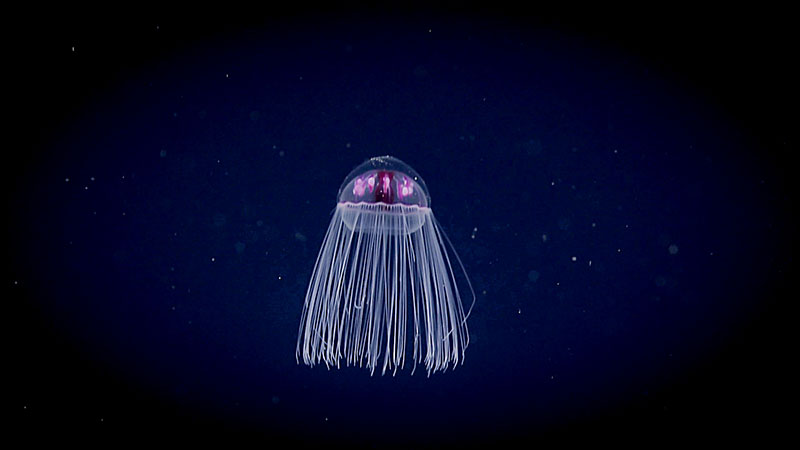
A colorful jelly extends its tentacles to feed in the water column during a Windows to the Deep 2019 midwater transect. Image courtesy of the NOAA Office of Ocean Exploration and Research, Windows to the Deep 2019. Download larger version (jpg, 1.4 MB).
Today is World Jellyfish Day. In honor of the occasion, let’s review a few fun facts about jellyfish. Did you know:
Below are two videos that show some of the jellyfish we’ve seen during previous visits to the Southeastern U.S. continetal margin.
During the Windows to the Deep 2019 expedition, we encountered this charismatic swimming jelly called a helmet jelly that was twisting and tumbling as it moved across remotely operated vehicle Deep Discoverer’s field of view. With a characteristic groove encircling its swimming bell, the helmet jelly is classified as a coronate scyphomedusa, with a scientific name of Periphylla periphylla. Read more about these jellies in this mission log. Video courtesy of the NOAA Office of Ocean Exploration and Research, Windows to the Deep 2019. Download larger version (mp4, 66.2 MB).
This big medusa jellyfish belongs to the genus Cyanea, which is a group of scyphozoan jellyfishes well-known for their tendency to "bloom" and occur in large numbers in surface waters. They can also be a major food item for leatherback turtles. Video courtesy of the NOAA Office of Ocean Exploration and Research, Windows to the Deep 2018. Download larger version (mp4, 14.9 MB).
World Jellyfish Day celebrates all jellyfish, so here are some images of jellyfish we’ve seen in other parts of our world’s ocean.
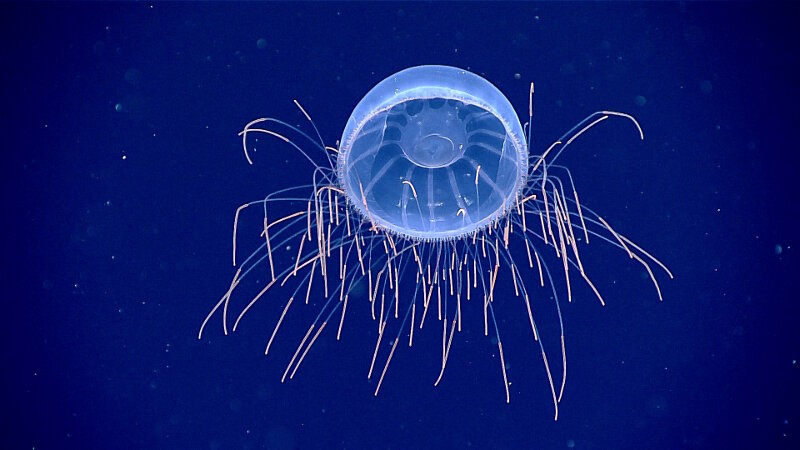
Hydromedusa near “Keli’ihananui” Seamount in the Pacific Remote Islands Marine National Monument, now known as Pacific Islands Heritage Marine National Monument. Image courtesy of the NOAA Office of Ocean Exploration and Research, Mountains in the Deep: Exploring the Central Pacific Basin. Download larger version (jpg, 1.3 MB).
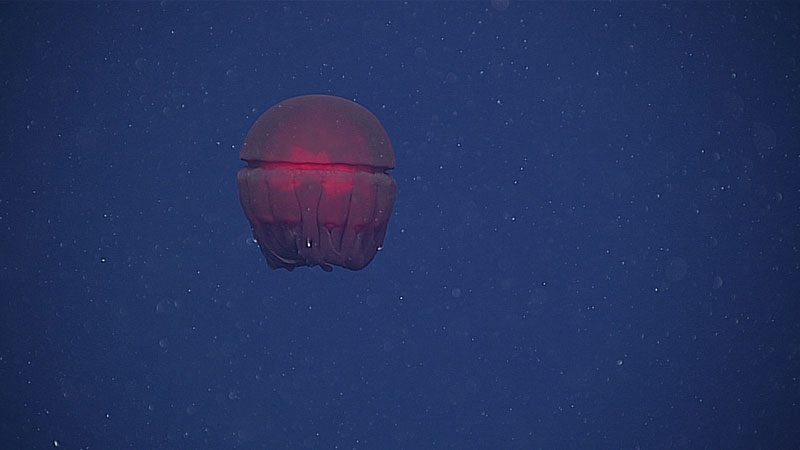
Coronate jelly north of Pioneer Bank in the Papahānaumokuākea Marine National Monument. Image courtesy of NOAA Office of Ocean Exploration and Research, Hohonu Moana 2016. Download image (jpg, 38 KB).
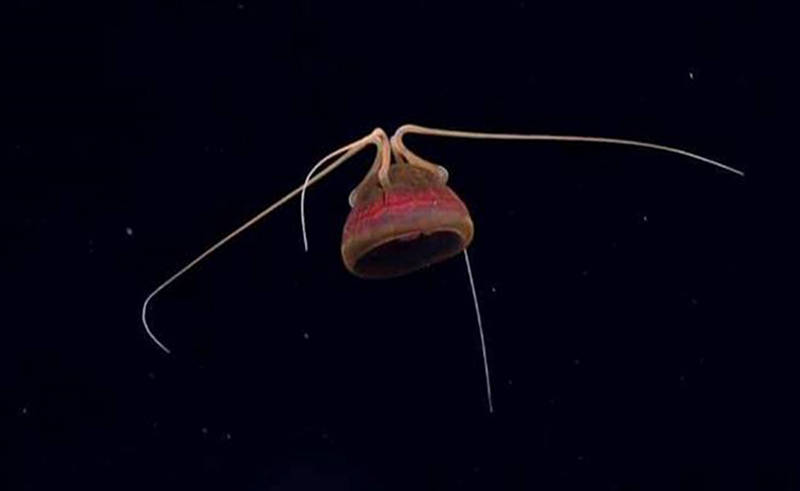
Unusual jellyfish on south side of Johnston Seamounts in the Pacific Remote Islands Marine National Monument, now known as Pacific Islands Heritage Marine National Monument. Image courtesy of the NOAA Office of Ocean Exploration and Research, 2015 Hohonu Moana. Download image (jpg, 15 KB).
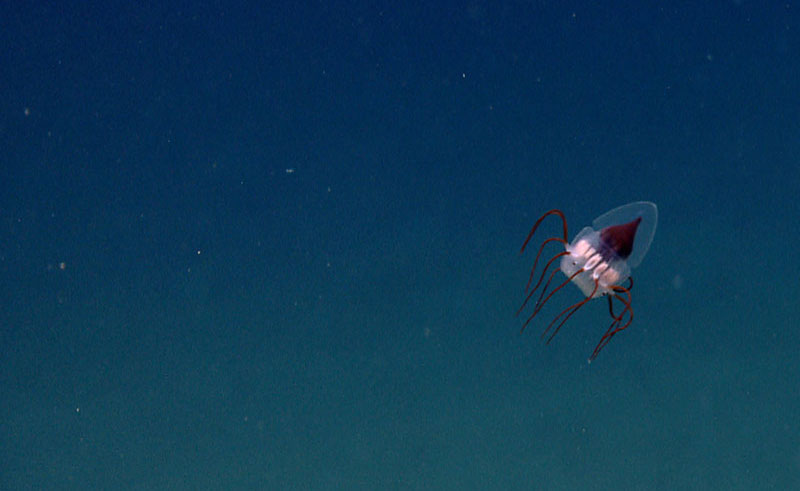
Unusual jellyfish off northeast coast of the United States. Image courtesy of the NOAA Office of Ocean Exploration and Research, Northeast U.S. Canyons Expedition 2013. Download larger version (jpg, 656 KB).
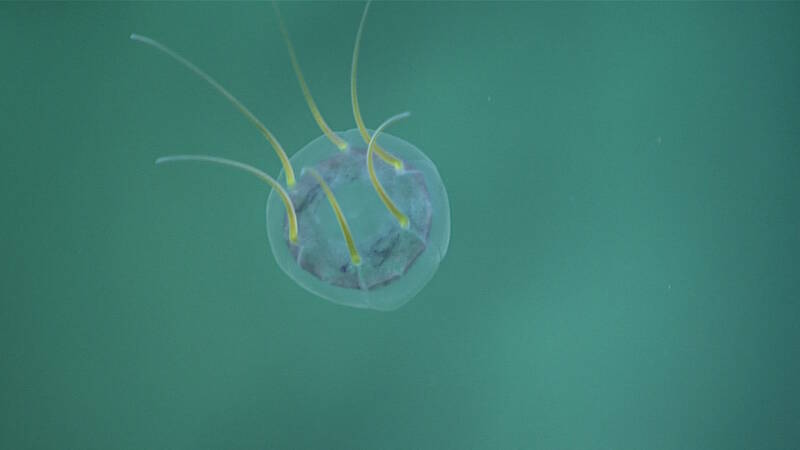
Narcomedusa jelly on the north slope of Howland Island in the Pacific Remote Islands Marine National Monument, now known as Pacific Islands Heritage Marine National Monument. Image courtesy of the NOAA Office of Ocean Exploration and Research, Discovering the Deep: Exploring Remote Pacific MPAs. Download larger version (jpg, 710 KB).
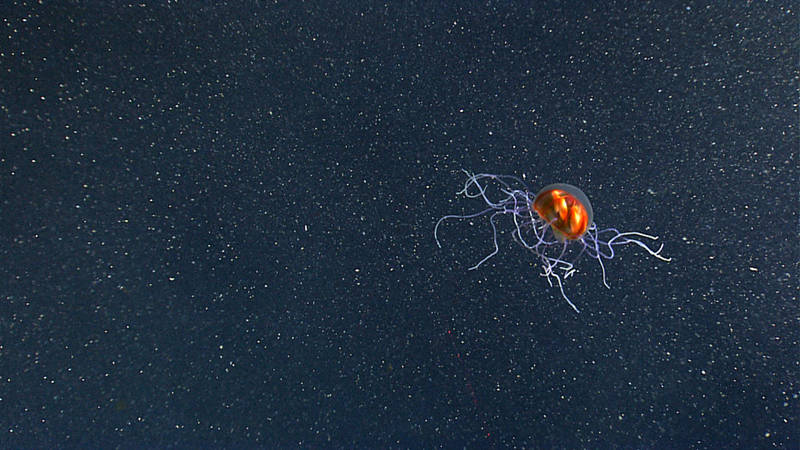
Trachymedusae along the west wall of Mona Canyon off the northwest coast of Puerto Rico. Image courtesy of the NOAA Office of Ocean Exploration and Research, Exploring Puerto Rico’s Seamounts, Trenches, and Troughs. Download larger version (jpg, 1.8 MB).
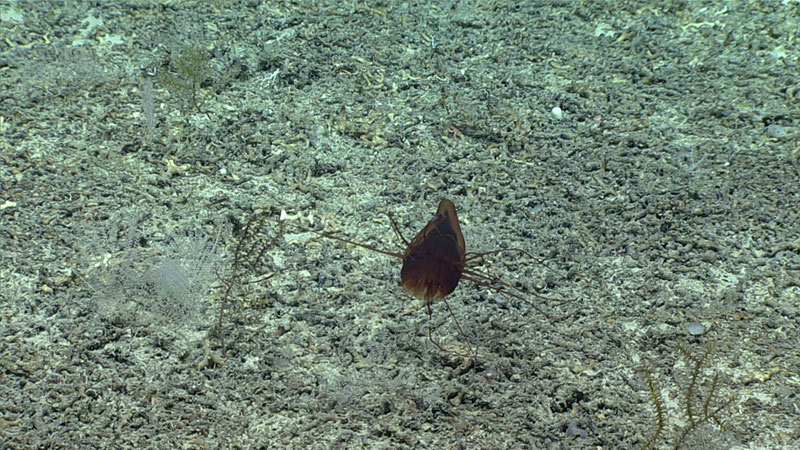
This helmet jellyfish was observed on the seafloor during Dive 02 of the Southeastern U.S. Deep-sea Exploration expedtion. Like other jellyfish, this species lives in the water column, so it was unusual to encounter it on the seafloor. Image courtesy of the NOAA Office of Ocean Exploration and Research, 2019 Southeastern U.S. Deep-sea Exploration. Download larger version (jpg, 1.8 MB).
We haven’t seen too many other jellyfish during this expedition. However, we have planned a full day dedicated to exploring the water column, so be sure to watch us live on November 12.